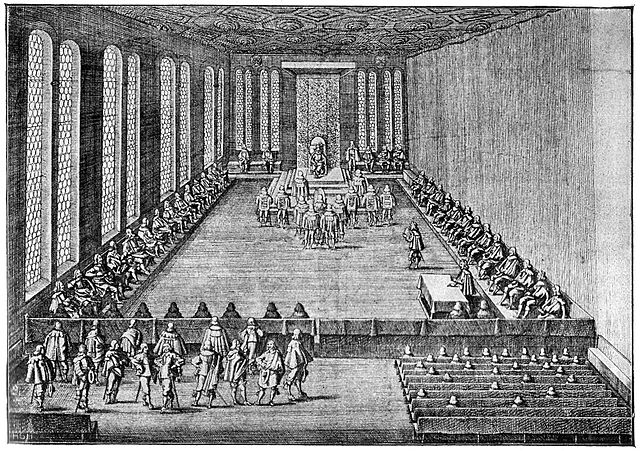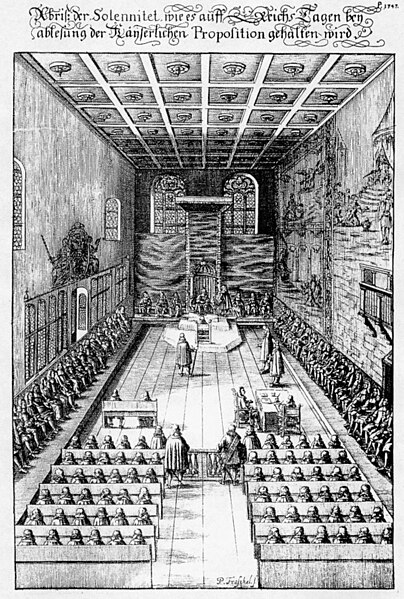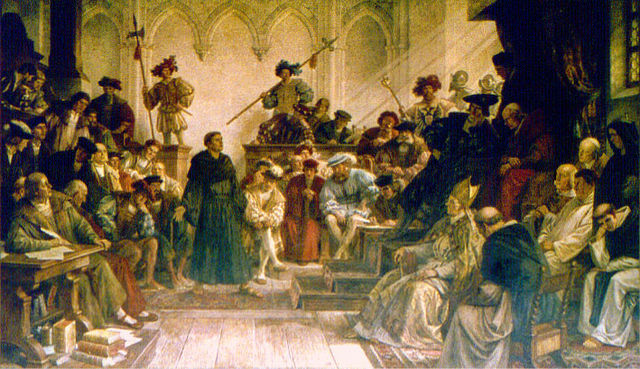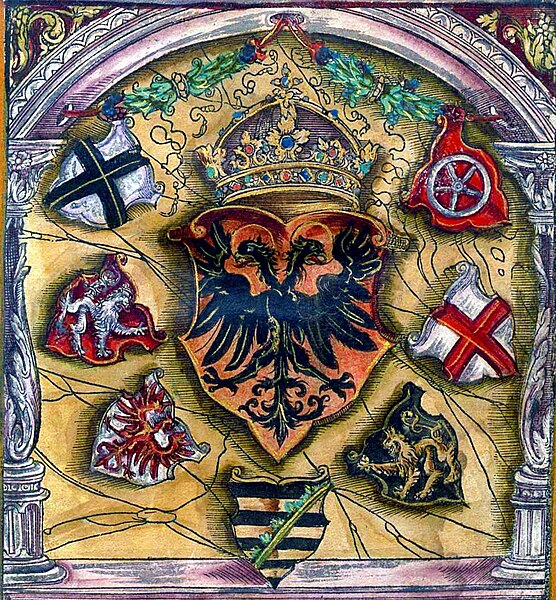Imperial Count was a title in the Holy Roman Empire. During the medieval era, it was used exclusively to designate the holder of an imperial county, that is, a fief held directly (immediately) from the emperor, rather than from a prince who was a vassal of the emperor or of another sovereign, such as a duke or prince-elector. These imperial counts sat on one of the four "benches" of Counts, whereat each exercised a fractional vote in the Imperial Diet until 1806. Imperial counts rank above counts elevated by lesser sovereigns.
Meeting of the Perpetual Imperial Diet in Regensburg in 1640, after an engraving by Matthäus Merian
Patent awarding the title of Imperial Count to Baron Anton Schenk von Stauffenberg, by Emperor Joseph II, 1785
Imperial Diet (Holy Roman Empire)
The Imperial Diet was the deliberative body of the Holy Roman Empire. It was not a legislative body in the contemporary sense; its members envisioned it more like a central forum where it was more important to negotiate than to decide.
Seating plan for an inauguration of the Imperial Diet in the Regensburg Town Hall from a 1675 engraving: Emperor and prince-electors at the head, secular princes to the left, ecclesiastical to the right, deputies of imperial cities in the foreground.
The summons for Luther to appear at the Diet of Worms, signed by Charles V. The text on the left was on the reverse side.
"Here I stand": Martin Luther at the Diet of Worms, 1521 19th-century painting by Hermann Wislicenus
The coats of arms of prince electors surround the Holy Roman Emperor's, from flags book of Jacob Köbel (1545).






